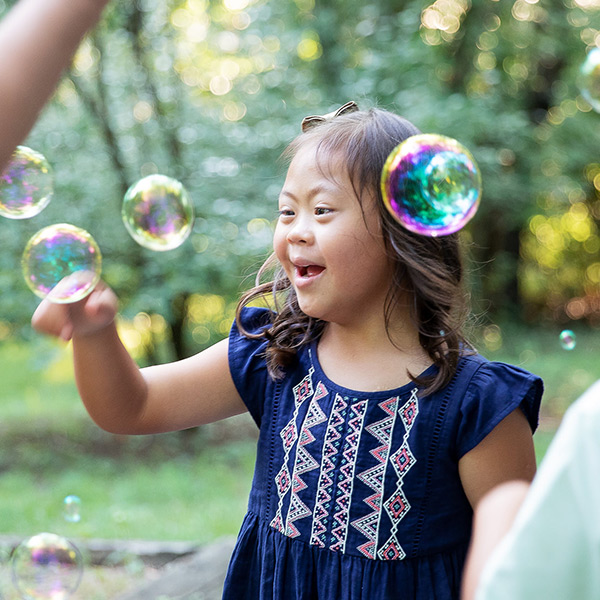Words Matter: Choosing Words and Images That Honor Children
With our ever-changing media landscape amid often-divisive cultural movements, it is imperative for us to choose wisely words and images that honor children, particularly within the adoption and foster care communities. Whether we realize it, we have the opportunity to inspire and educate the larger population with the words and images we use to describe children, and in those words and images, we also have the opportunity to share hope and promote healing among children who are vulnerable, impacted by trauma.
At Show Hope, we hold high a core value of “Words matter in all things.” We recognize with clear eyes that words have the power to build up and tear down, so in the words we use, the images we share, and in the stories we tell, we hold ourselves to the highest of standards, guided by our faith in God the Father, Jesus the Son, and the Holy Spirit.
At Show Hope, we believe it is with words that God spoke into existence a perfect world and chose the form of a book to give us his redemptive story. As found in his New Testament book, James reminds us, “So also the tongue is a small member, yet it boasts of great things” (3:5). Our words have power, so we, at Show Hope, will be careful how we use them to tell the stories of children, their families, their cultures, and whole regions of the world.
It is important to approach conversations around adoption and orphan care thoughtfully and carefully. The manner in which we speak about adoption and orphan care can impact the perceptions of those around us. It is crucial that our words preserve, protect, and affirm the inherent worth and dignity of children and their families. So we seek to use positive, people-first language whenever we approach these sensitive subjects. People-first language honors the person and his/her inherent dignity before adding any qualifier or descriptor.
The following are practices and tips to keep in mind as you think about the words and images you choose to share about your child and your family.
People-First Language
- Use people-first language so as to honor the person and her/his inherent dignity and value before adding qualifier or descriptor.
- Avoid the term “orphaned child.”
- Whenever possible, use “child(ren) who has/have been orphaned,” “child(ren) who has/have been impacted by adoption and/or foster care,” “child(ren) living outside of parental care,” and best of all, just “child(ren).”
- Say “a child with special needs,” not “a special needs child.”
- In regard to medical language used in reference to children, remain sensitive and careful on a case-by-case or situation-by-situation basis.
- Avoid dramatization of a child’s emotions or mental state. Say a child cried but not “wept with despair.” Strive to portray truth in events while always working diligently to protect the child’s right to her/his own unique perspective and dignity.
General Thoughts
- Avoid salvific language when sharing adoption stories. While it is true that God chooses to bring us into his family through adoption, adoption of children into earthly families is not a method of salvation or a form of evangelism. Pastor and author David Platt sums it up well when he said, “It’s important to realize that we adopt not because we are rescuers. No. We adopt because we are rescued.” As an example, we would never say, “Suzy was 4 years old when her family came and rescued her.” In the same way, do not use “rescue” language when talking about adoption.
- Use “family,” “loving family, or “loving family through adoption” instead of “forever family.” We choose these words rather than “forever family” to honor a child’s parents by birth as well as remaining aware that disruptions within adoptions do occur.
- Avoid “Gotcha Day.” Instead, consider a phrase like “when she/he/they joined their her/his/their family through adoption.” While “Gotcha Day” has become a term of endearment, for some, it places a child in terms of a commodity.
- Choose images and videos that mobilize and motivate through hope, not guilt. Any image used, whether in photo or video, should emphasize the dignity and beauty of children.
Questions to Consider
- Is there any way in which your communication leaves a child to shoulder the cost of your advocacy efforts—either now or in the future?
- Are you sensationalizing a child’s story for attention or recognition, even if the benefit gained ultimately addresses the needs of the child in some way?
- Would the words/photos used to share a child’s story—whether a description of her/his life circumstances, needs, physicality, and/or the child’s experience and interactions with the world—be likely to elicit feelings of shame or embarrassment if exposed to an audience of her/his peers in the future?
- In considering a specific communications piece, would you want the same details shared if the life being featured was you?
- Does this communication highlight the children you advocate for as, first and foremost, simply children and not inherently defined by their circumstances or needs?
In closing, it is imperative for us to choose wisely words and images that honor children, particularly within the adoption and foster care communities. Words have the power to build up and tear down, so in the words we use, the images we share, and in the stories we tell, we should hold ourselves to the highest of standards.
Whether we realize it, we have the opportunity to inspire and educate the larger population with the words and images we use to describe children, and in those words and images, we also have the opportunity to share hope and promote healing among children who are vulnerable.


